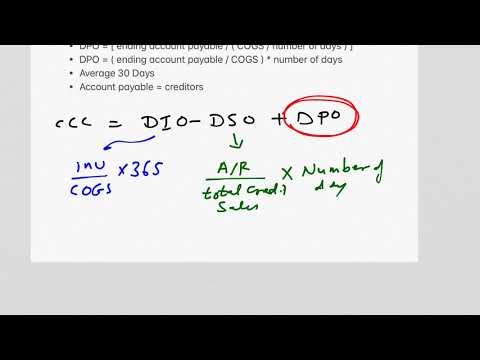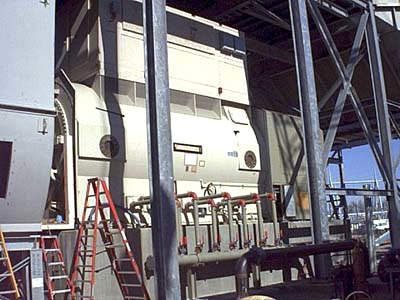
Our Oil and Gas team includes former energy traders, industry experts, political risk analysts and macroeconomists, with full analyst interaction available. Current liabilities are a company’s obligations which are expected to be settled within 365 days (less than 1 year). The term ‘Current’ is used to indicate that the obligation will be settled soon, within a year.
- Rather, the company retains it for reinvesting it in the business to further expand it or for meeting contingencies.
- The money lender is concerned about coverage of security and for that purpose, fair market value of security provided is relevant and not the cost or book value.
- The company retains and reinvests in the business the part of the profit which remains undistributed among shareholders.
- Both are very important for a business and have their own role to play in accounting.
- Section 123 – Declaration of dividend;Criteria for declaration of dividends out of free reserves.
- Capital profits are generally not available for distribution by way of dividends among the company’s shareholders.
The company takes up the obligation because it believes these obligations will provide economic value in the long run. Liability in simple words is the loan that the company has taken, and it is obligated to repay. Typical examples of obligation include short term borrowing, long term borrowing, payments due etc. Similarly, the amount used out of profits for the redemption of preference shares and transferred to the capital redemption reserve can be used only for the issuance of fully paid bonus shares.
Difference between Provisions and Reserves
Provision can be made by retaining the amount by way of providing for any known liability, the amount of which can not be determined accurately. It is a liability that can be measured only by using a substantial degree of estimation. It is an amount kept aside to cover the expenses that may occur in the future. Designed for freelancers and small business owners, Debitoor invoicing software makes it quick and easy to issue professional invoices and manage your business finances. Hence, company’s can choose how and where they would like to reinvest their earnings back into the business.
- These factors are net profits, dividend policy and the age of the enterprise.
- Think about the entire company as an individual, whose sole job is to run its core operation and create wealth for its shareholders’.
- The reserve which is made due to the requirement of the law of land is termed as a statutory reserve, such as capital redemption reserve, whose creation is mandatory.
- U.S. federal law requires banks to hold a certain portion of their funds in cash vaults or in Federal Reserve Bank accounts.
- A reserve fund is a reserve against which there is a clearly earmarked investment outside the business.
(However, even without specific exclusion in the 1956 Act, by practice and common understanding these were excluded even earlier). Section 63 – Issue of bonus shares;Issue of bonus shares out of free reserves is permitted. Excess reserves, on which the Fed pays interest, are reserves that exceed these requirements. Borrowed reserves are those that banks borrow from the Federal Reserve at the discount rate.
Reserves and Provisions
Retained earnings and reserves are very similar nature, but they are not exactly the same thing. Actionable insight on monetary policy, balance sheet and inflation with focus on global issuance. Do recollect; we looked at ‘Finance Cost’ as a line item when we looked at the P&L statement.

Or, alternatively, in order to eliminate complications and cumbersome record keeping, the statute could have prescribed a mandatory period of say 8 years at the end of the which the amount of write back could be transferred to / reckoned as part of net worth. Still these are unrealised gains and if used for company law purposes, no doubt there is a possibility that it would lead to an unbridled misuse resulting in the safeguards built into the Act becoming ineffectual. Reserves are a part of a company’s profits, which have been kept aside to strengthen the business financial position in the future, and fulfil losses (if any). Reserves are transferred after paying taxes but before paying dividends, whereas retained earnings are what is left after paying dividends to stockholders. The total shareholders’ fund is a sum of share capital and reserves & surplus. Since this amount on the balance sheet’s liability side represents the money belonging to shareholders’, this is called the ‘shareholders funds’.
Difference between provisions and reserves:
In order for a business to keep functioning, they will redistribute their retained earnings into their business to either invest or pay off debts. The key difference between the two is that reserves are a part of retained earnings, but retained earnings are not a part of reserves. MNI’s Oil and Gas service offers real-time, actionable intelligence and insight on global oil and gas markets, delivered in concise bullet point format, either via the MNI website, Bloomberg or the ICE platform. It is complemented by our email service, which provides weekly analysis of the energy sector, market roundups ahead of each regional trading session, as well as comprehensive previews of all OPEC meetings.
“Available for distribution as dividends”Significantly, Schedule III General Instructions For Preparation Of Balance Sheet And Statement Of Profit And Loss Of A Company includes item (h) Surplus i.e., balance in Statement of Profit and Loss as an item of reserves. Therefore, although surplus in statement of profit and loss does not satisfy the definition of a “reserve”, yet for all the purposes of the Companies Act, 2013, it is treated as a reserve. Noting that section 123 creates two buckets out of which dividends can free reserves meaning be declared i.e. profits of the year and the reserves from which dividends can be declared, it would appear that reserves excludes profits of the year or the surplus in statement of profit and loss. Different conditions are attached to payment out of surplus and payment out of reserves. Considering especially the manner in which “free reserves” is worded although at first sight, the word “reserves” may not include “surplus”, the above reference in Schedule III, in the opinion of the author puts the controversy to rest.
Key Differences Between Retained Earnings and Reserves
Now, per section 2 (43) “free reserves” means such reserves which, as per the latest audited balance sheet of a company, are available for distribution as dividend. Therefore, the presumption should be that “free reserves” will come into play when considering declaration of dividends either out of the surplus in statement of profit and loss or out of reserves which is also permitted subject to observing the criteria. (Secretarial Standard 3 on dividend issued by the Institute of Company Secretaries is a recommended reading). This is also subject to some situations in which even borrowed funds can be used for such purposes. Not only that, for payment of dividend, depreciation write-back need not be eliminated. Historically, the payment of dividend out of the amount credited to the profit and loss account has been frowned upon by the Department of Company Affairs.
Is free reserve same as general reserve?
It is also known as free reserve, which means that the creation of a general reserve is not mandatory for the business, but a company can create a general reserve only when there is sufficient profit earned by the business.
What are the four examples of reserve?
- General Reserve.
- Retained Earnings.
- Dividend Equalisation Reserve.
- Debenture Redemption Reserve.
